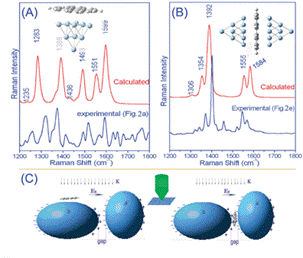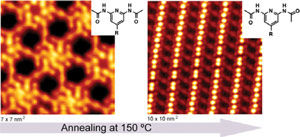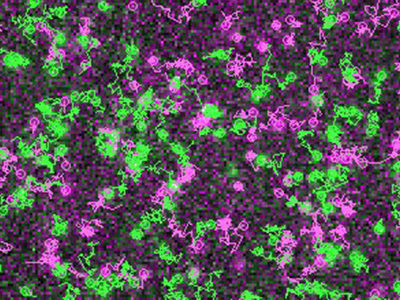Single molecules cooling off
Surface-enhanced Raman scattering has been used to probe single molecular behaviour by scientists in China and Sweden
Probing single molecular behaviour using surface-enhanced Raman scattering (SM-SERS) has attracted considerable attention recently, although there are a few drawbacks. One major problem is the strong spectral-fluctuation (also known as ‘signal-blinking’) that is associated with single molecules, which prevents detailed information being extrapolated from the molecule and its surroundings. Yao says ‘up to now SM-SERS studies have been limited to a few dye molecules that form strong chemical bonds with the metal substrate.’ This means that the formation of the chemical bond between the molecule and the substrate leads to stable spectra with a strong signal. However, this provides little consensus on how to determine the structure of the single molecule.

Yao conducted SM-SERS measurements for a non-bonding molecule, perylene, which was physically adsorbed on (uniformly assembled) colloidal silver nanoparticles. As expected, at room temperature, the SM-SERS spectra of a perylene molecule displayed strong spectral-fluctuation, however, this was effectively eliminated by lowering the temperature of the substrate.
'It sounds straightforward’ explains Yao, ‘but this needs special consideration of the experimental set up and a good understanding of SM-SERS mechanism. With this improvement, we can get a stable spectrum and in combination with first principle calculations we can find out where the single molecule prefers to stay after cooling and under Plasmon excitation.’
Original publication: Zhixun Luo et. al., Chem. Commun., 2009.
Most read news
Other news from the department science

Get the analytics and lab tech industry in your inbox
By submitting this form you agree that LUMITOS AG will send you the newsletter(s) selected above by email. Your data will not be passed on to third parties. Your data will be stored and processed in accordance with our data protection regulations. LUMITOS may contact you by email for the purpose of advertising or market and opinion surveys. You can revoke your consent at any time without giving reasons to LUMITOS AG, Ernst-Augustin-Str. 2, 12489 Berlin, Germany or by e-mail at revoke@lumitos.com with effect for the future. In addition, each email contains a link to unsubscribe from the corresponding newsletter.




















































